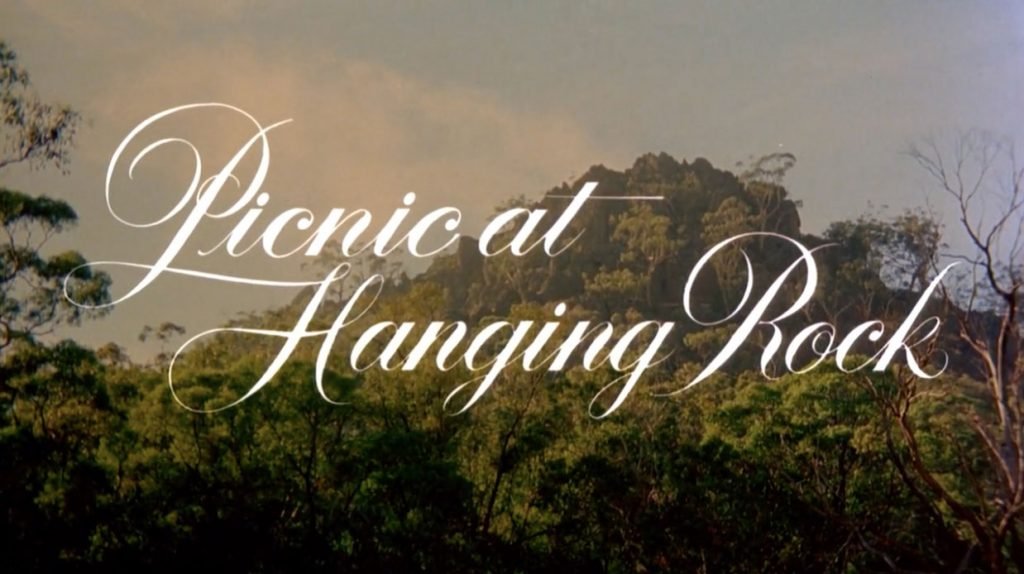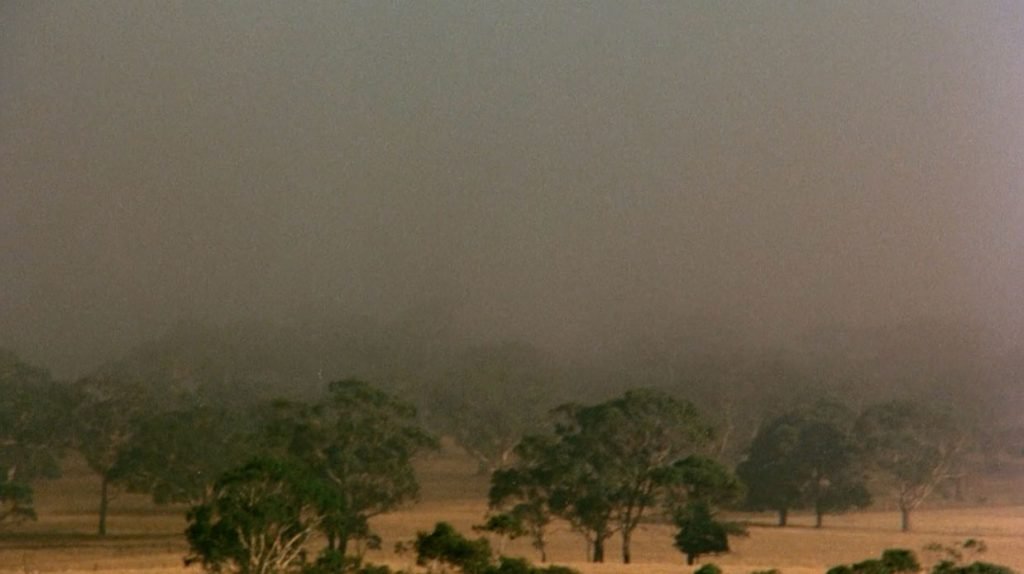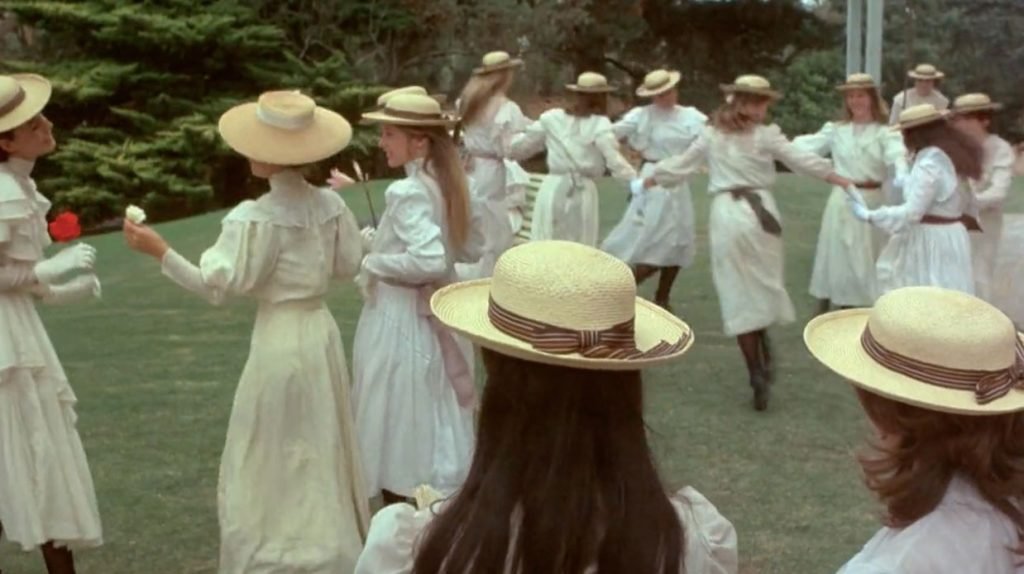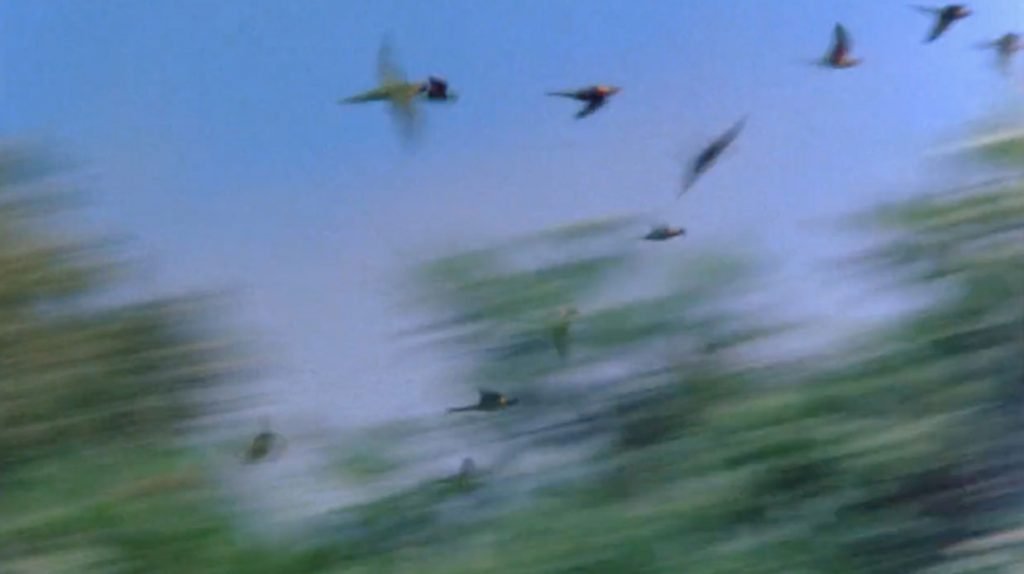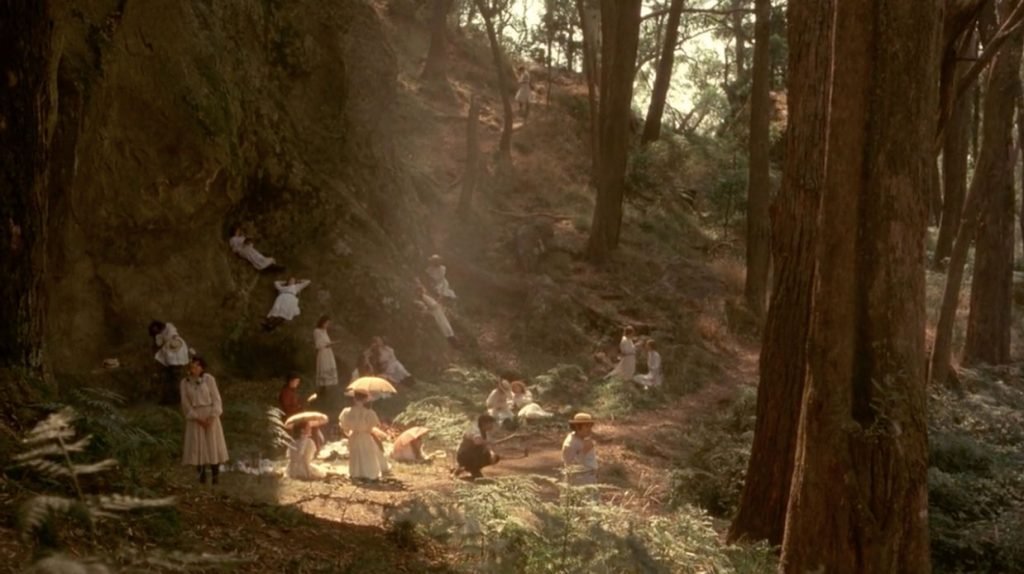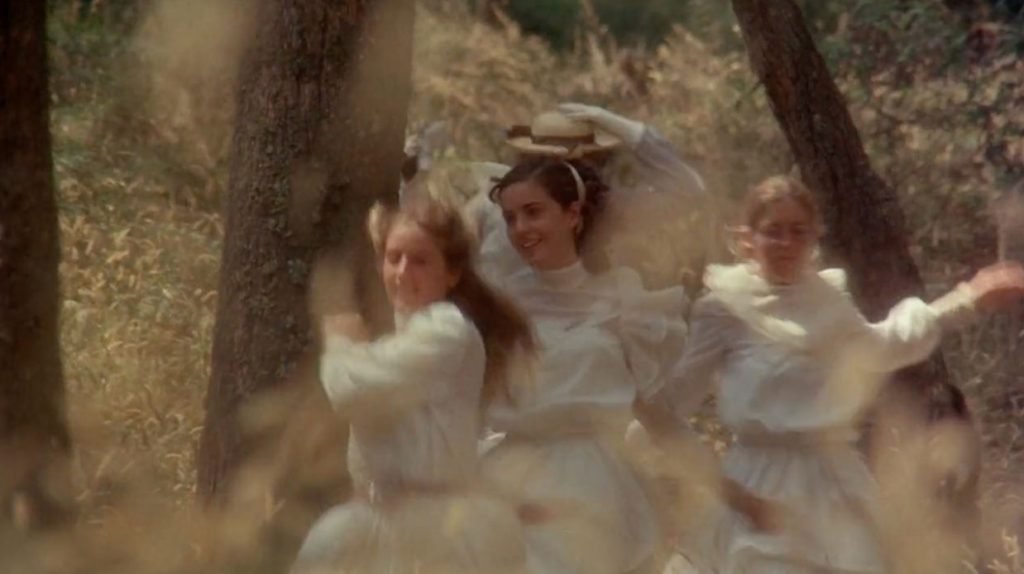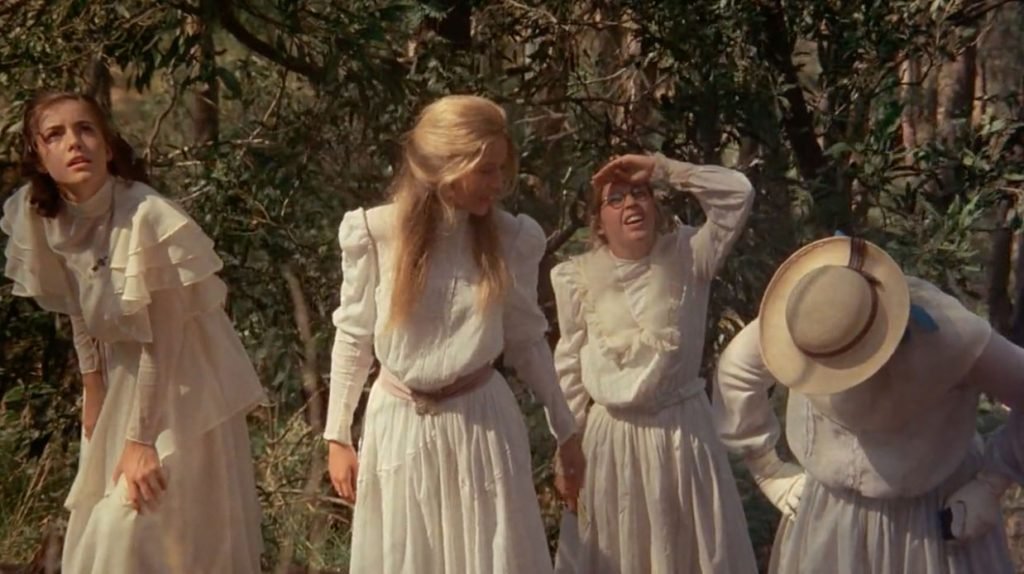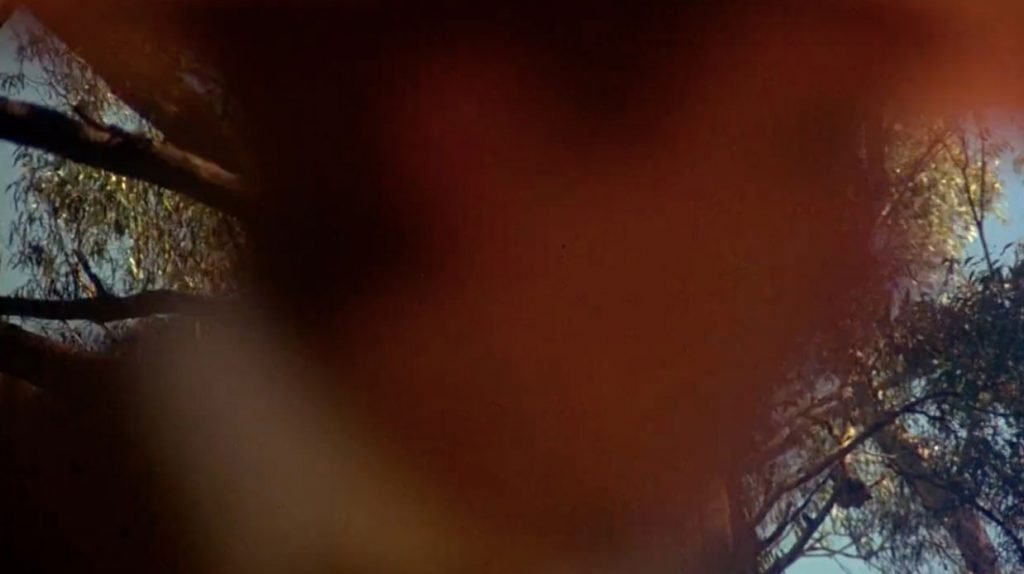Picnic at Hanging Rock is a 1975 film by Peter Weir based on the novel of the same name by the Australian writer Joan Lindsay. The film was first shown at Adelaide’s Hindley Cinema Complex on August 8, 1975. It was one of the first Australian films to gain international exposure and some commercial success. It gained world fame to the director Peter Weir, creator in the following years of other highly successful films such as The fleeting moment, Witness, The Truman Show, Master & Commander.
The story written by Lindsay is completely inventive, although some sentences taken from an interview with the writer have led us to believe that there is some reference to some news stories. Peter Weir’s film is fueled in the development of the story and in the atmosphere of the novel, although some parts have been omitted or reduced in order to determine a new reading of the same subject.
The film opens with the image of a suspended landscape, only half revealed. The lower part of the frame shows the Australian plain, while in the lower part the sky is covered by a dense mist that slowly rises, thus revealing the rocky complex of Hanging Rock.
For few moments sky and earth are present in the same frame. Soon after Hanging Rock seems to stand alone against the sky leaving its rocky roots shrouded in mist.
This first sequence under the opening titles prefigures the vertical path that crosses the whole film, in which each expression oscillates between seen and unseen, above and below, sky and earth, describable and indescribable.
More than a scenario in which setting a story, since the first images, Hanging Rock is a real character: a mysterious synthesis of all natural elements.
Tongue of fire stretched towards the sky, possible passage to another, different dimension.
Hanging Rock reveals itself as a living monument to the irrational that, as often happens in cinema, overturns all our certainties about reality, leaving the viewer with the arduous task of formulating its own orientation within the story and the impressions received.
Peter Weir’s operation, whose film denies any solution to narration, does not just question the same logic of the story, but undermines the very point of view on which this logic is based.
Within the film, in fact, an anthropocentric perspective slowly gives way to a new vision of the world that seems to take into consideration the possibility of a cosmological and participatory vision; in which the perspective of the world without us and therefore a narration submitted to our point of view becomes possible.
The film accompanies the viewer in a panic conception in which man is only a part of the whole and as such he renounces to bend reality to his perspective. In other words he renounces to be subject and protagonist, to instead propose himself in an equal dialogue with the nature.
Peter Weir’s point of view and logic proposed by his film, show significantly how much the human perspective is not worth more than those of a bird, a koala, a spider, proposing in this sense a narrative slip for which the man, traditional subject from which starting each narration simply becomes one of the objects of vision.
This process of building an unpublished narrative perspective starts from the very first images of the film. The sweet spring morning, the awakening of the girls combined with the images of newly blooming flowers and the particular use of light, however, suggest something else: the rooms are in dim light, left to be illuminated only by an external source of diffused light, almost to underline a imprisonment condition and longing for life at the same time.
This same contrast between order and disorder, between sexuality and repression, between inside and outside, will explode a few minutes later with the carriage ride to Hanging Rock.
Along the outdoor run, the happy bodies of the girls briefly become one with the same landscape they pass through, producing a choral image of awakening and spring and losing their subjectivity to become part of a wider moment.
The arrival at Hanging Rock is greeted by a subtle change of register that immediately insinuates the questioning of the objective point of view on history. Above all on a stylistic level, Weir adopts from here a series of solutions borrowed from experimental cinema, such as the crossfades that are resolved in real superimpositions.
Through this optical effect, as in the beginning, the girls are approached to the elements of spring in a formal correspondence that seems to suggest an attempt to disassemble the logical distinction between man and nature.
Subsequently Weir introduces, often almost in secret, the use of slow motion that deforms the perception of movements, as if to confirm that, once abandoned the watches (that are from a certain moment onwards will no longer be able to mark time) the characters now move in a temporal dimension different from ours.
The eye of the camera films a reality that is no longer what we know, but already tends to something else, a metaphysics for which a question powerfully insinuates: Who is watching? What point of view do we follow?
In other words, the perspective of the film is no longer human, but a different, superior, cosmic one, of which all nature takes part. Man’s point of view remains that of a limited consciousness within another wider consciousness, similar to that of a dream within a dream.
This awareness of the existing corresponds for the girls to the climbing path of the rock, a labyrinthine path with almost initiatory nuances, immersed in a nature that seems to indicate to them a questioning on their own perception of identity in favor of a perception of oneself as part of a larger and timeless whole. An asceticism gradually leading them to adopt a new perspective, from above and for the other.
Approaching the summit, the encounter with nature becomes a loss of oneself, of one’s individuality, the end of individual existence as we know and perceive it and discover of that dimension common to plants and animals.
On the almost pagan notes of a flute begins a dance with a mystical flavor, where, through the use of slow motion and fades, the girls seem to overlap and blend in with each other; and above all merge also with the earth itself, the sky and sun.
The disappearance of the girls that does not and will never find a rational explanation gives us the opening to a different, wider perceptive logic. Not by chance in fact, this moment in the film will mark the decline of the authority of Mrs. Appleyard, custodian and advocate of a culture questioned by everything she has always removed: chaos, violence, sex and emptiness.
Nature as a protagonist has now imposed its superior logic which escapes human understanding exactly as the mystery of life and death eludes us.
